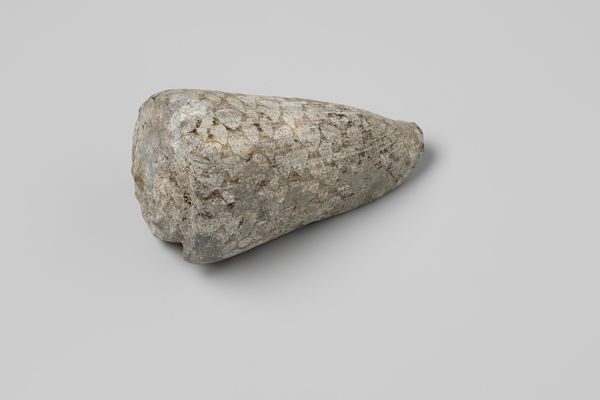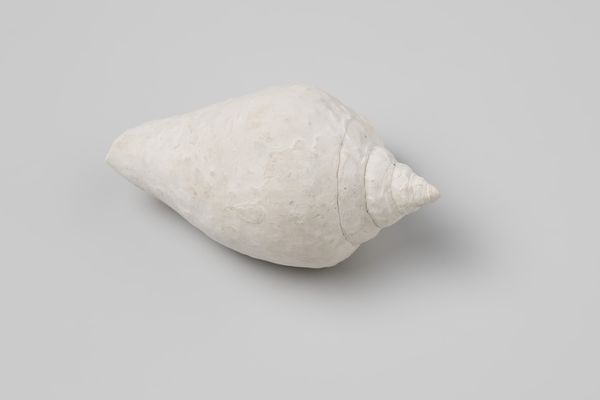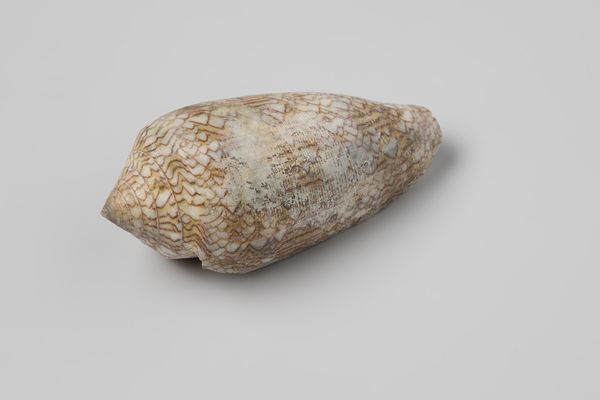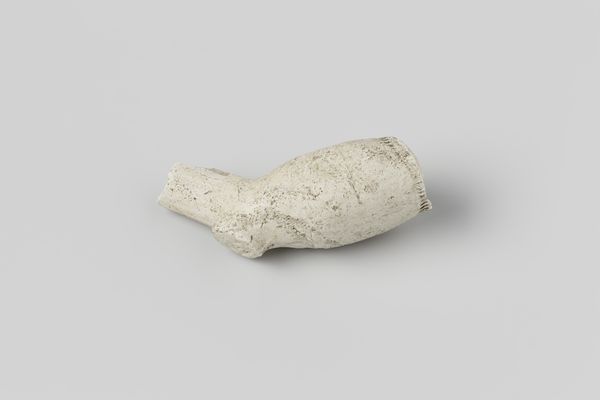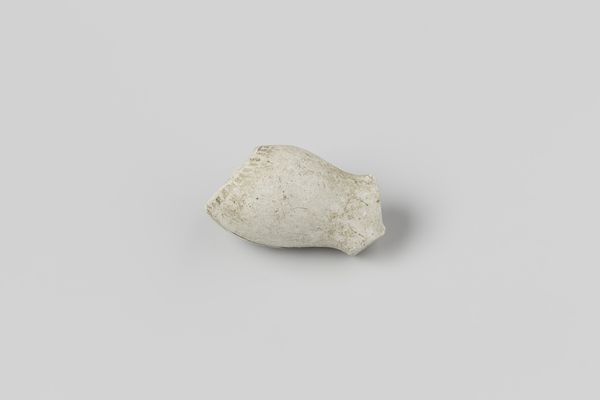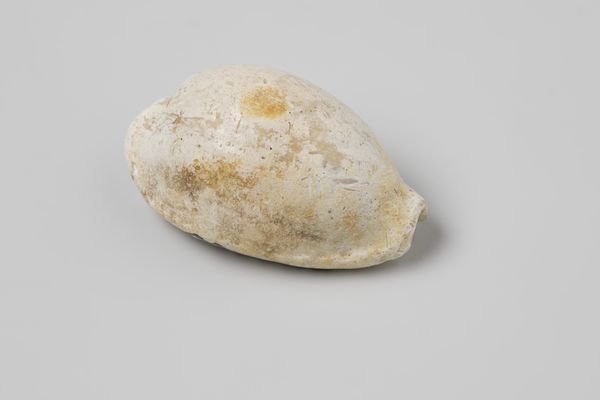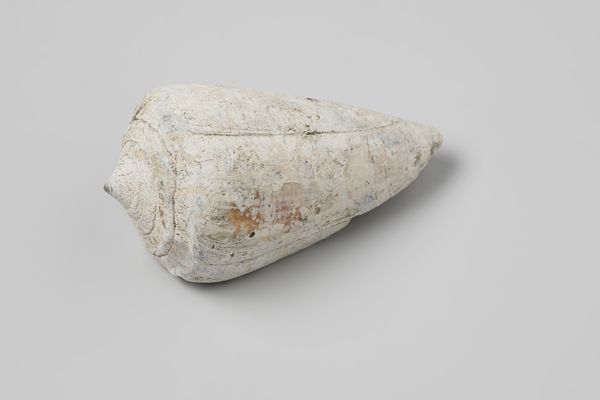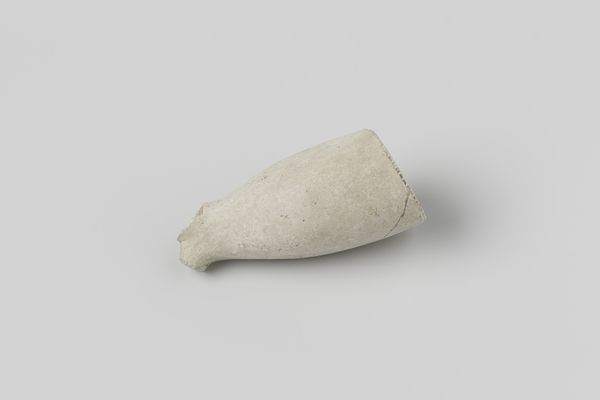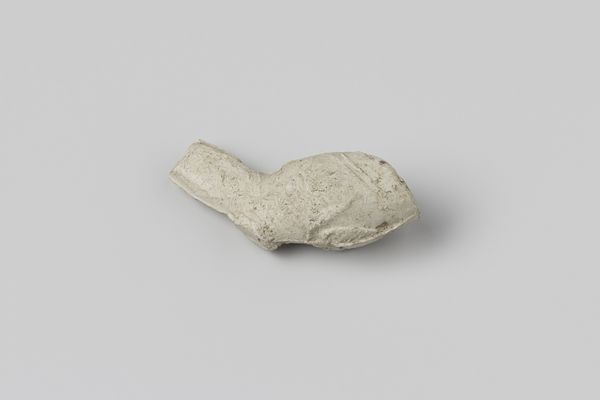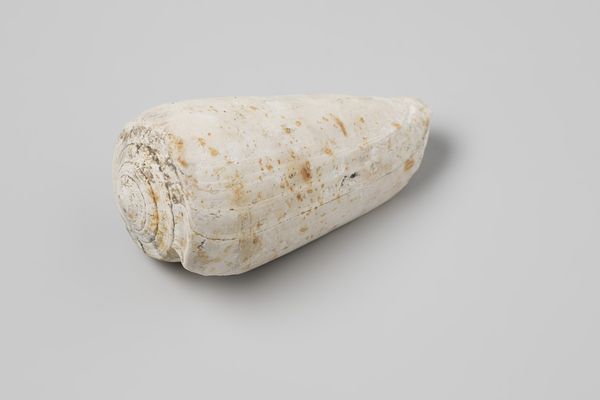
Conus textile shell from the wreck of the Dutch East India ship Witte Leeuw before 1613
0:00
0:00
nietvantoepassing
Rijksmuseum
#
circular oval feature
#
3d printed part
#
swirl
#
curved arc
#
appetizing
#
stoneware
#
ceramic
#
round circular shape
#
product photography
#
nature closeup
Dimensions: length 5.8 cm, width 2.9 cm, height 2.7 cm
Copyright: Rijks Museum: Open Domain
Curator: Here we have a Conus textile shell. It was recovered from the wreck of the Dutch East India ship Witte Leeuw. What strikes you when you look at this object? Editor: Hmm, it feels ancient and delicate all at once. You can almost feel the pressure of the ocean where it rested all those years. I’m strangely reminded of fragile human-made artifacts, maybe because of the textured surface. Curator: Absolutely. Think of the conditions that shaped this little shell! This object is from before 1613. That means it experienced the maritime trade of the Dutch East India Company and its unfortunate end. It's almost a found ready-made object, touched by complex historical forces. Editor: And made, in a very different way, by the animal inside it! You're talking about its value in trade and markets, and that's there for sure. But as an object made by something living it humbles us, a reminder that production and labor takes more forms than we immediately imagine. Curator: The textile cone, like so many natural forms, also became incorporated into art production. Textile patterns mimicked the shell's markings, while the shell itself functioned as a commodity, an exchange object, and sometimes, as currency itself! The material conditions, production of textiles, colonial ships-- all become part of our reading of the object. Editor: Right. Its simple shape belies so many narratives! I am also interested in its intimate size. Looking at it here, separate from the ocean that was once its home, it reminds me of how art isolates things. Sets them apart for contemplation. It feels a bit like rescuing this small thing from the ocean, but do we change its fundamental meaning by doing so? Curator: Rescuing, yes, but also framing it. These actions contextualize its journey as a crafted artifact as well as a found one. Perhaps the ocean still resides in the object’s composition as well as the knowledge and narratives attached to it. Editor: I hadn't thought of the composition so directly! Okay, now when I look at it I see how it also merges organic and imposed histories... Well, I'll be thinking about that for the rest of the day!
Comments
No comments
Be the first to comment and join the conversation on the ultimate creative platform.
